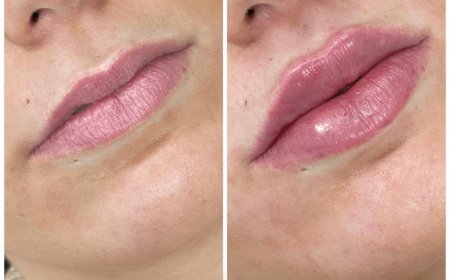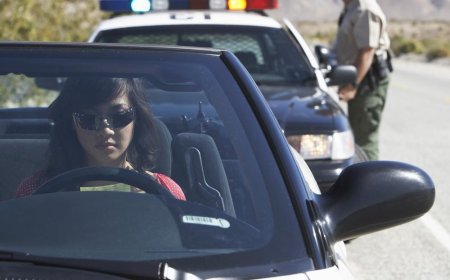How to Install Security Cameras Outside for Maximum Coverage and Minimal Blind Spots
Installing outdoor security cameras can be one of the most effective ways to secure your home. But its not just about mounting a camera on a wall. If you want full perimeter protection and no blind spots, you must plan your camera placement carefully. In this guide, well walk you through how to install security cameras outside for maximum coverage and minimal blind spots the right way.
Why Outdoor Camera Placement Matters
Proper placement of outdoor security cameras helps prevent burglaries, package theft, and even property damage. Many homeowners mistakenly install cameras without evaluating the coverage area, leading to gaps in surveillance. To truly benefit from home security camera installation, you need to consider the angle, height, lighting, and field of view for each camera.
At Cam Security Surveillance llc, weve helped hundreds of homeowners optimize their security systems and the results speak for themselves.
Step 1: Plan Your Camera Coverage Zones
Before you even pick up a drill, walk around your property and identify key areas you want to monitor. These usually include:
-
Front door and porch
-
Driveway
-
Backyard or garden area
-
Side entrances or gates
-
Ground-floor windows
This helps you plan coverage in a way that minimizes overlapping angles while ensuring all entry points are protected.
Also, check where shadows, tall bushes, or fences might block the cameras line of sight. These are common causes of blind spots.
Step 2: Choose the Right Cameras for Each Location
Not all outdoor cameras are created equal. Some have a wide-angle lens for large areas like backyards, while others offer narrow but detailed views great for doorways or driveways. When thinking about how to install security cameras outside, match the camera to the areas needs.
For instance:
-
Use wide-angle cameras to cover corners of the house for a full 180-degree view.
-
Use zoom-capable cameras for driveways or long walkways.
-
Consider motion-activated cameras for entry points to reduce false alarms.
Make sure your outdoor cameras are rated for all-weather use and have night vision or IR LEDs for clear nighttime footage.
Step 3: Install Cameras at the Right Height and Angle
One of the most overlooked factors in how to install security cameras outside is height. The ideal height is between 8 and 10 feet from the ground. This is high enough to deter tampering but low enough to capture facial features clearly.
Mounting too high can reduce image detail, while mounting too low can make the camera easy to disable. Also, tilt the camera downward slightly for better facial and body visibility.
Avoid pointing cameras directly at bright light sources like the sun or floodlights this causes glare and poor footage. Try to position the cameras in shaded spots or where lighting is consistent.
Step 4: Use Wi-Fi Extenders or PoE for Reliable Connectivity
A major concern with home security camera installation is ensuring the cameras maintain strong connectivity. If youre using wireless cameras, consider Wi-Fi extenders or mesh networks to boost signal in distant corners of the yard.
For wired cameras, Power over Ethernet (PoE) is a popular option. It allows you to power the camera and transmit data using a single cable, which simplifies installation and reduces clutter.
Always run cables through protective conduit if exposed outdoors this prevents damage from weather and animals.
Step 5: Reduce Blind Spots with Overlapping Fields of View
One key strategy in achieving full perimeter security is ensuring a slight overlap between cameras. While you dont want too much duplication, a 10-15% overlap ensures no blind spots if one camera fails or misses something.
If youre searching for professional security camera installation near me, choosing experts like Cam Security Surveillance llc can make all the difference in setting this up correctly.
Also, consider integrating your outdoor system with smart home hubs or mobile apps to monitor footage in real time an added layer of convenience and control.
Maintenance Tips After Installation
Once your cameras are installed, regular maintenance is crucial. Clean the lenses monthly to prevent dust or water spots. Check the power supply and connectivity weekly to avoid footage loss.
Trim bushes or tree branches that may grow and block camera views. If you experience frequent issues with visibility or motion detection, revisit the camera angles and adjust accordingly.
You may also read:Do hospital haves security cameras
Conclusion
Learning how to install security cameras outside effectively is about more than just screwing devices onto walls. Its about strategic planning, smart equipment selection, and meticulous positioning. Whether you're doing a DIY setup or considering hiring pros, remember that your familys safety depends on the quality of your installation.
If you feel overwhelmed or unsure, were here to help. Cam Security Surveillance llc specializes in home security camera installation and offers customized solutions for every home layout. For those searching for professional security camera installation near me, our team is just a call away.
Want expert guidance on your next security upgrade? Dont wait contact us today and lets secure your home the right way.






























